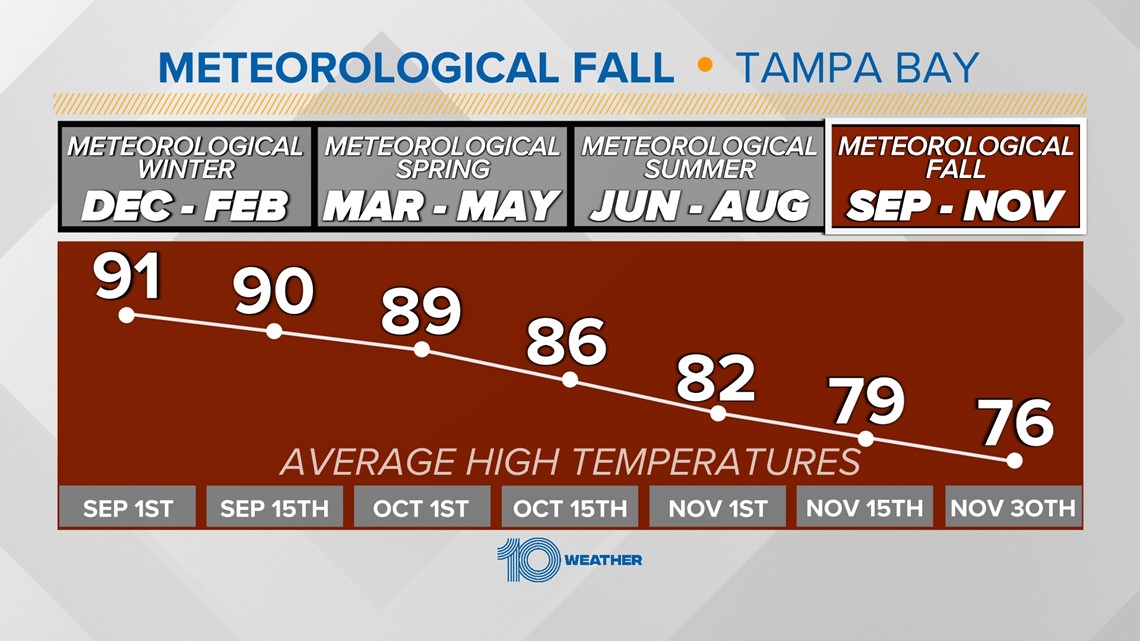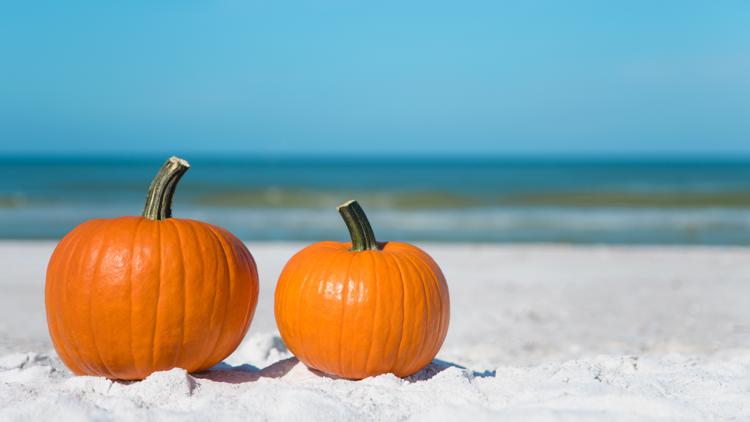ST. PETERSBURG, Fla. — The kids are back in school and summer is coming to an end, with Labor Day marking the unofficial end of summer. This means fall is right around the corner.
Of course, we live in Florida, which means we don't get the usual tell-tale signs of fall's presence, aka the leaves changing color and the crisp, cooler air rushing in. The Sunshine State is known for its year-round warmth, and the only leaves that turn brown are dead palm fronds.
Still, there are measurable changes that even Florida experiences when fall begins.
When does fall start?
There are two different determiners for the fall season — meteorological and astronomical.
Meteorologists break up the seasons into four three-month intervals that begin on the 1st of the month based on the annual temperature cycle and the calendar, according to the National Centers for Environmental Information (NCEI).
This means meteorological fall starts on Sept. 1.
However, astronomical seasons, which most people are familiar with, are based on the rotation of the Earth around the sun and where the planet sits on its axis.
Astronomical fall happens on the autumnal equinox, typically on Sept. 22.
When will Florida start getting cooler?
Believe it or not, we're just around the corner from a temperature drop. Okay, it's not dramatic, but it is there.
When meteorological fall starts on Sept. 1, the Tampa Bay area's average temperature is 91 degrees. But on Sept. 15, that average drops to 90 degrees. By Oct. 1, the average high temperature lowers to 89.
Once Oct. 15 hits, however, the highs start going down more significantly. By the end of November, which also marks the end of hurricane season, the average high sits around 76 degrees.


Florida's fall outlook
The Earth has continued to see record-breaking heat and scorching temperatures, and the prolonged heat is something we feel here in Florida, too.
So when are we getting relief and what will fall look like in Florida?
The Old Farmer's Almanac released its annual extended long-range forecast for the fall season at the beginning of August. The Almanac is predicting a warmer-than-normal autumn for much of the U.S. However, Florida is not on that list.
Rather, Florida joins a smaller list of regions expected to have a cooler-than-average autumn. This includes much of the Southeast and central U.S.
Florida is also expected to have below-average rainfall totals during the fall season.



